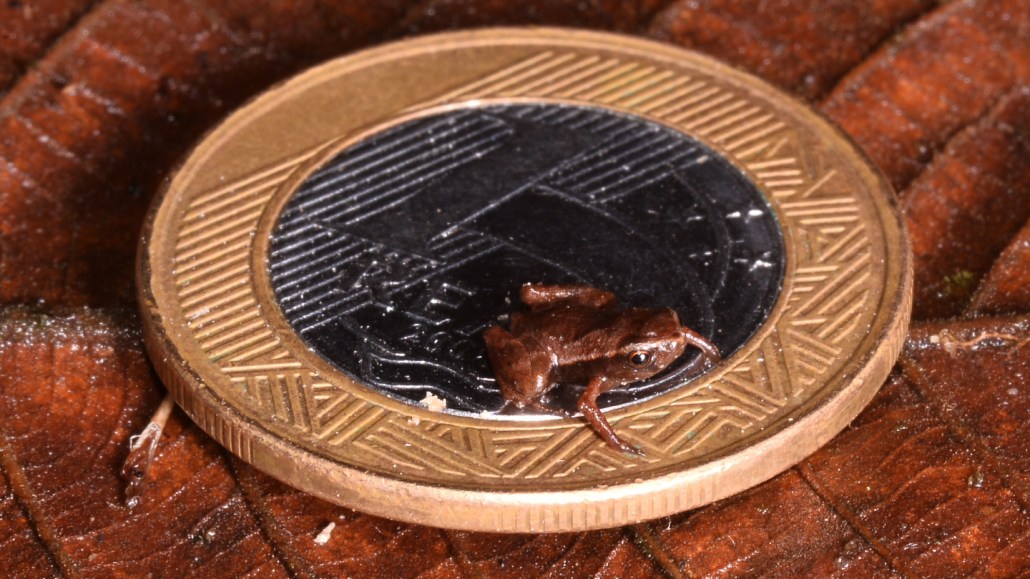This frog is the world’s smallest known vertebrate
The tiniest adult was just 6.5 millimeters (under 3/10 of an inch) long

Can you spot the Brazilian flea toad? At just 7 millimeters long on average, this frog has been named the world’s smallest known amphibian and smallest known vertebrate. Here, one is dwarfed by a 27-millimeter (1-inch) wide $1 Brazilian real coin.
W.H. Bolaños, I.R. Dias and M. Solé/Zoologica Scripta 2024







